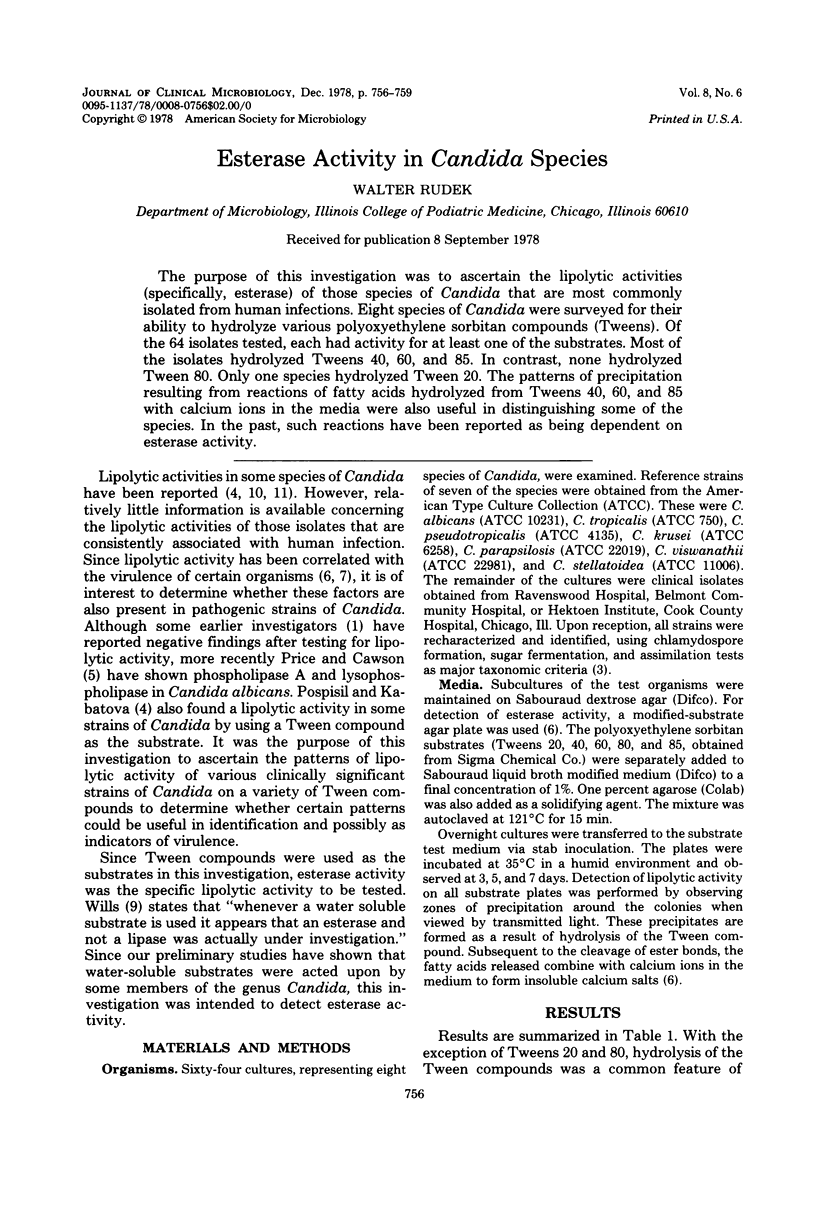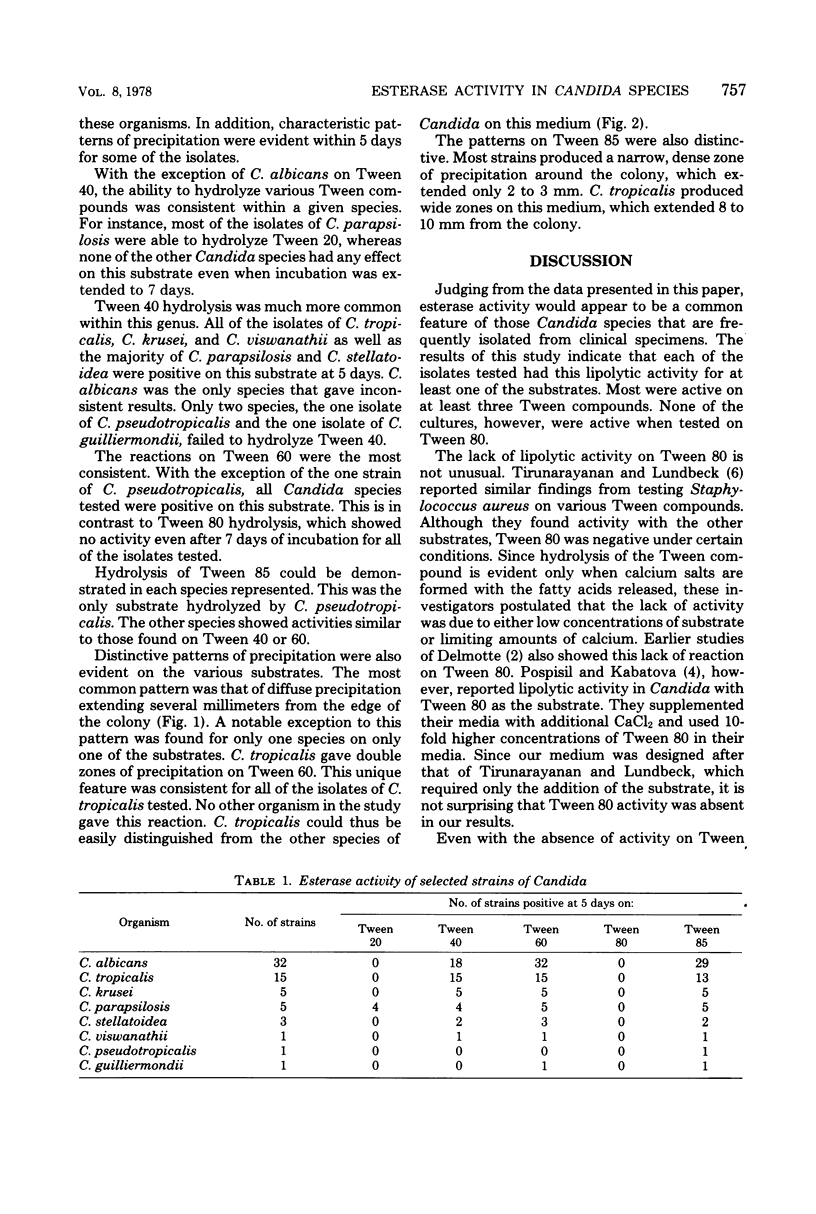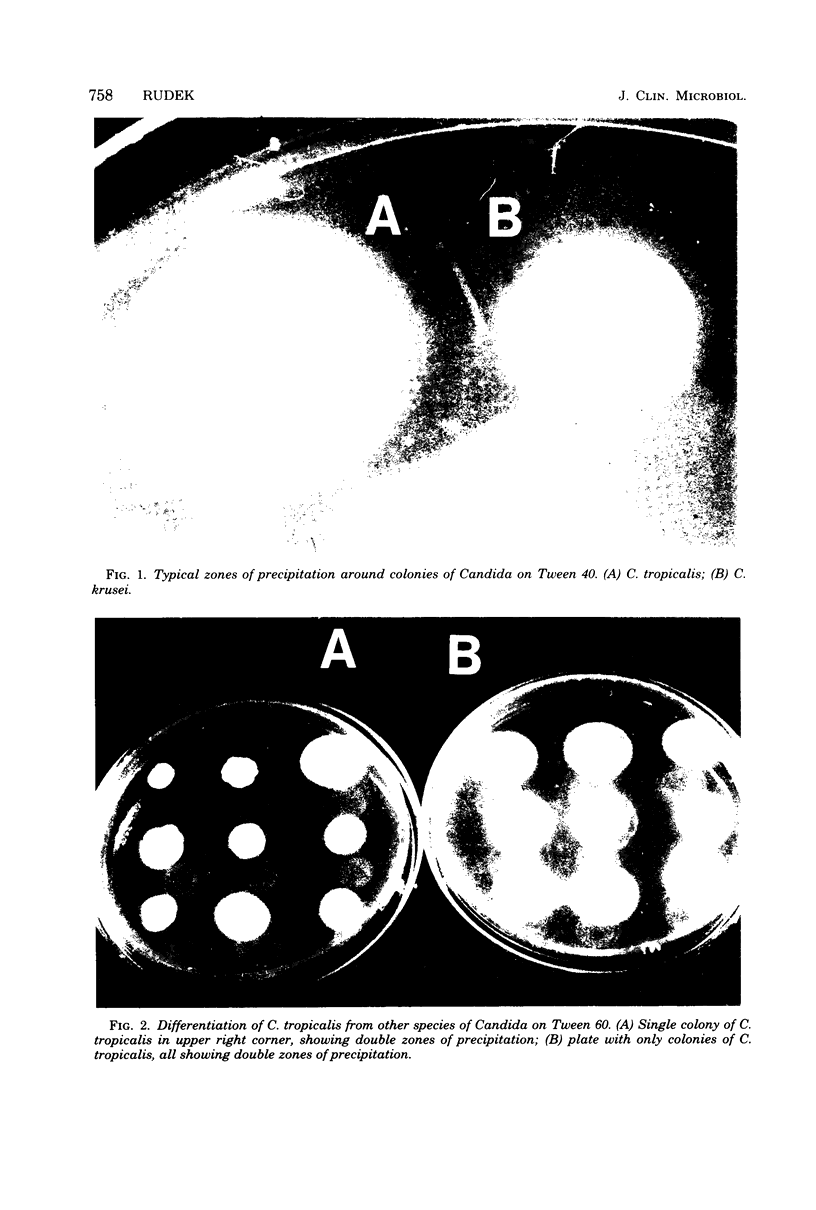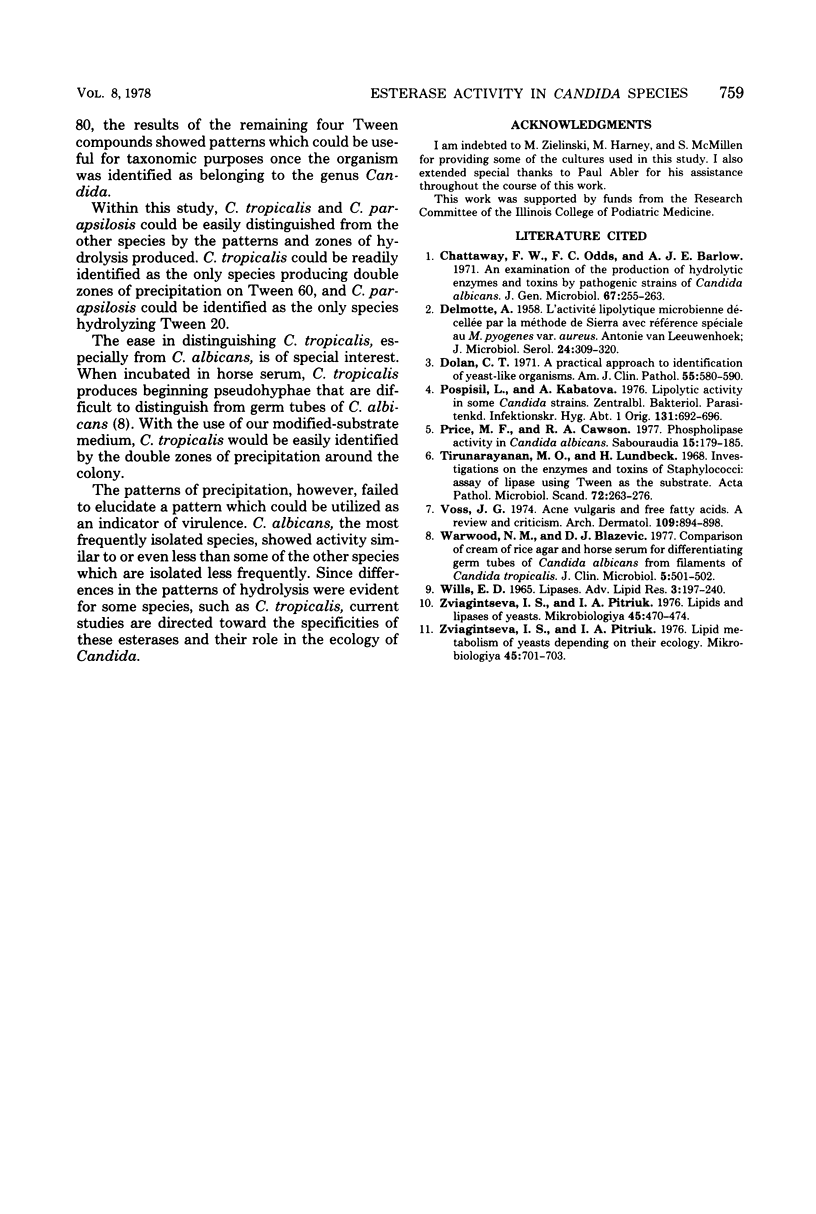Abstract
The purpose of this investigation was to ascertain the lipolytic activities (specifically, esterase) of those species of Candida that are most commonly isolated from human infections. Eight species of Candida were surveyed for their ability to hydrolyze various polyoxyethylene sorbitan compounds (Tweens). Of the 64 isolates tested, each had activity for at least one of the substrates. Most of the isolates hydrolyzed Tweens 40, 60, and 85. In contrast, none hydrolyzed Tween 80. Only one species hydrolyzed Tween 20. The patterns of precipitation resulting from reactions of fatty acids hydrolyzed from Tweens 40, 60, and 85 with calcium ions in the media were also useful in distinguishing some of the species. In the past, such reactions have been reported as being dependent on esterase activity.
Full text
PDF



Images in this article
Selected References
These references are in PubMed. This may not be the complete list of references from this article.
- Chattaway F. W., Odds F. C., Barlow A. J. An examination of the production of hydrolytic enzymes and toxins by pathogenic strains of Candida albicans. J Gen Microbiol. 1971 Aug;67(3):255–263. doi: 10.1099/00221287-67-3-255. [DOI] [PubMed] [Google Scholar]
- Dolan C. T. A practical approach to identification of yeast-like organisms. Am J Clin Pathol. 1971 May;55(5):580–590. doi: 10.1093/ajcp/55.5.580. [DOI] [PubMed] [Google Scholar]
- Pospísil L., Kabátová A. Die lipolytische Aktivität einiger Candida-Arten. Zentralbl Bakteriol Parasitenkd Infektionskr Hyg. 1976;131(8):692–696. [PubMed] [Google Scholar]
- Price M. F., Cawson R. A. Phospholipase activity in Candida albicans. Sabouraudia. 1977 Jul;15(2):179–185. [PubMed] [Google Scholar]
- Tirunarayanan M. O., Lundbeck H. Investigations on the enzymes and toxins of staphylococci. Assay of lipase using Tween as the substrate. Acta Pathol Microbiol Scand. 1968;72(2):263–276. doi: 10.1111/j.1699-0463.1968.tb01342.x. [DOI] [PubMed] [Google Scholar]
- Voss J. G. Acne vulgaris and free fatty acids. A review and criticism. Arch Dermatol. 1974 Jun;109(6):894–898. [PubMed] [Google Scholar]
- Warwood N. M., Blazevic D. J. Comparison of cream of rice agar and horse serum for differentiating germ tubes of Candida albicans from filaments of Candida tropicalis. J Clin Microbiol. 1977 Apr;5(4):501–502. doi: 10.1128/jcm.5.4.501-502.1977. [DOI] [PMC free article] [PubMed] [Google Scholar]
- Wills E. D. Lipases. Adv Lipid Res. 1965;3:197–240. doi: 10.1016/b978-1-4831-9939-9.50012-7. [DOI] [PubMed] [Google Scholar]
- Zviagintseva I. S., Pitriuk I. A. Lipidnyi obmen drozhzhei v sviazi s ikh ékologiei. Mikrobiologiia. 1976 Jul-Aug;45(4):701–703. [PubMed] [Google Scholar]
- Zviagintseva I. S., Pitriuk I. A. Lipidy i lipazy nekotorykh drozhzhei. Mikrobiologiia. 1976 May-Jun;45:470–474. [PubMed] [Google Scholar]




